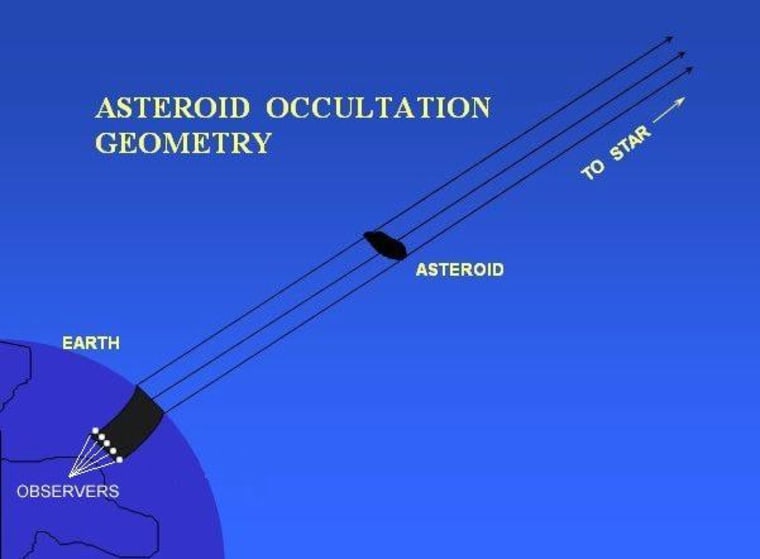This Thursday, in the wee small hours of the morning, an asteroid known as 163 Erigone (eh-RIG-uh-nee) will occult the star Regulus as seen from parts of the Northeast. That might sounds like witchcraft, but I assure you, it's most definitely not. Astronomically speaking, an occultation is when one celestial object "hides" another. In this case, a small space rock that doesn't give off any light of its own will pass directly between Earth and one of the brightest stars in the night sky. If you happen to be watching at exactly the right time, you will actually see the star "wink" at you.
What's even cooler about this event is that you don't need a telescope to see it. You don't even need to flee the bright lights of the city. Regulus is the brightest star in the constellation Leo and the 22nd brightest star in the night sky. At approximately 2:06 A.M. in the New York City area, Leo will be visible to the southwest, its characteristic backwards question mark (also called a sickle) tilting toward the horizon. Regulus is the "dot" of the question mark, and if you watch closely, you will see it "wink" as 163 Erigone zooms by.
Besides the wow factor of witnessing the alignment of a 45-mile diameter rock 110 million miles from Earth traveling at 11,400 miles per hour and a 1.3 million-mile diameter star over 79.3 light years away, this occultation could also help astronomers learn more about 163 Erigone with your help. The International Occultation Timing Association is soliciting volunteers to submit their observations of the event with the help of the "Occultation 1.0" smartphone app (sorry, iPhone only for now). The app lets you time how long you see the star "wink" (see here for instructions). By crowd sourcing the timing of the occultation from multiple locations along the projected viewing path, astronomers are hoping to learn more about the size and shape of the asteroid and whether the asteroid has a companion (many do).
Astronomers in the New York City area (including myself) are currently coordinating "sidewalk" viewings via Twitter using the hashtags #starwink and #starwinkNYC. If you are out and about on Wednesday night into Thursday morning, before you seek your bed, seek out the stars for a little bit of science and a whole lot of wow!
Onward to more geek:
- A piece of Halley's Comet may have hit Earth in the early Middle Ages causing global cooling and famine.
- Speech pathology doctor diagnoses Scooby Doo's "ruh-roh" speech as "rhotic replacement".
- We used to think elephants only had one superpower (memory), but it turns out distinguishing between human voices is another one. [VIDEO]
- Mini T-rex dinosaurs may have once roamed the Arctic. [VIDEO]
- Scientists may soon sequence King Richard III's genome. Will it "prove him a villain"?
- Iceland discovers "liquid hot magma" reservoir that they hope to harness as a geothermal energy source.
- The life of prosthetic body parts (limbs, implants, etc.) once they outlive their usefulness.
- Females spiders sometime prefer to eat their mates rather than actually mate with them.
- Physicists create a magnetic "north pole" without its southern companion for the first time.
Until next week...@Summer_Ash
